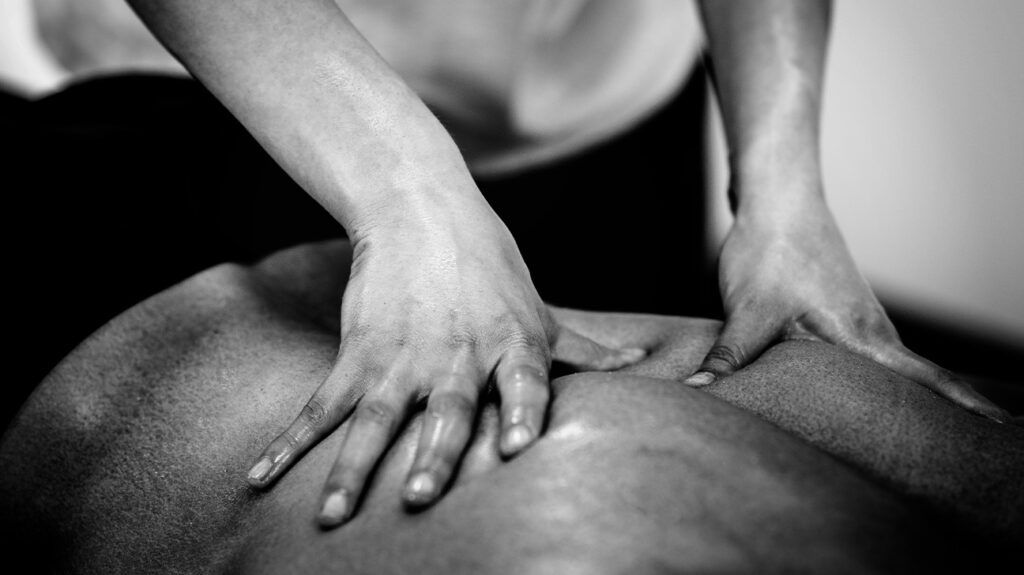Spinal stenosis does not always cause symptoms. When it does, symptoms can include neck, back, and leg pain. If cauda equina syndrome develops, it can also cause bowel and bladder dysfunction and more.
Spinal stenosis occurs when the gaps in the spine narrow and press on the spinal cord and nerve roots. It typically develops due to aging but can also occur due to congenital issues or spinal injuries.
When symptoms develop, some people may find that they gradually worsen over time. A doctor can recommend nonsurgical and surgical treatments to help manage symptoms and reduce their severity.
This article explains the symptoms of spinal stenosis in more detail, including how they develop and ways to treat them.

According to the American College of Rheumatology, spinal stenosis symptoms may start slowly and become more painful over time.
Back and leg symptoms
A person with spinal stenosis may experience back and leg pain.
This may present as an ache or pain that spreads from the back to the legs through the buttocks. The pain
People with spinal stenosis in the lower back may also experience the following leg symptoms:
- pain that spreads into one or both legs, most often the thighs
- numbness
- weakness
- cramping in the calves
- loss of movement
This pain may also feel better when lying down, sitting, or bending forward. A person may also experience numbing, tingling, and cramping in the feet.
Spinal stenosis leg pain may become so severe over time that walking short distances is hard to tolerate. Partial or complete paralysis of one or both legs may also happen in severe cases.
If a person experiences back pain without leg symptoms, a cause other than spinal stenosis is likely responsible.
Neck symptoms
Cervical spinal stenosis affects the neck and can lead to the following symptoms:
- pain in the neck
- tingling and numbness that spread into the hands through the arms
- weakness in one or both arms, the hands, or the fingers
Other symptoms
People with severe spinal stenosis may develop cauda equina syndrome. This may occur when the nerve roots in the lumbar spine are completely cut off. It can cause problems with:
- bowel function
- bladder function
- feeling sexual sensation
Without immediate treatment, cauda equina syndrome can also lead to temporary or permanent paralysis.
Some of these symptoms may remain after treatment, but surgery gives the best chance of a good outcome in people with severe spinal stenosis.
Spinal stenosis
Symptoms can also vary depending on where the narrowing occurs in the spine. Spinal stenosis in the lower back typically causes back and leg pain, while spinal stenosis in the neck may cause symptoms in the neck, hands, and arms.
Spinal stenosis is a degenerative condition, which means symptoms
The narrowing of the gaps in the spine can take years or even decades to develop. The disks of the spine lose sponginess as a person ages, which makes the disks shorter and more likely to bulge into the gaps.
While symptoms typically worsen over time, a person may find relief in certain positions, such as leaning forward. Medical treatments can also help alleviate symptoms.
A doctor may recommend nonsurgical treatments for mild symptoms of spinal stenosis. In severe cases, surgery
Nonsurgical treatments can involve:
- physical therapy, which can include learning exercises for increasing flexibility and building endurance
- medications, such as pain relievers and anti-inflammatories
- epidural injections, which are injections in the spine that help reduce pain and swelling
- braces and other devices
- mobility supports, such as a cane
Surgery for spinal stenosis can include laminectomy. This procedure involves removing the bony spurs and bone walls of the vertebrae. The surgeon may also remove bulging disks during this procedure.
Spinal fusion is a type of surgery that involves fusing two or more vertebrae together to repair slipped disks. The surgeon may use metal devices or bone grafts to secure bones.
Surgery may not repair all damage if nerve problems were severe before the procedure. However, these operations can reduce leg pain and improve movement in most people who receive them.
Learn more about spinal stenosis treatments.
Here are some frequently asked questions about spinal stenosis.
What is the most common treatment for spinal stenosis?
Spinal stenosis treatment typically involves physical therapy and medication. For severe cases, doctors may recommend surgery. The most common spinal stenosis surgery is laminectomy.
How can you tell if your spinal stenosis is getting worse?
Worsening spinal stenosis may make walking short distances extremely painful. Pain may reach the feet as spinal stenosis progresses. Leg weakness is a sign of critical pressure on the nerves.
What aggravates spinal stenosis?
Walking, standing, or extending the spine when a person has spinal stenosis
Spinal stenosis may not cause symptoms in everyone. If symptoms develop, they can lead to pain, tingling, cramping, and eventually weakness in the lower back and legs. It can also cause symptoms in the neck and arms.
Spinal stenosis can affect mobility. In its most severe form, it may affect bladder, bowel, and sexual function. Physical therapy, medication, and surgery may help improve comfort and flexibility.
